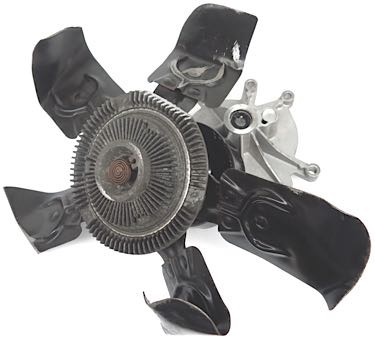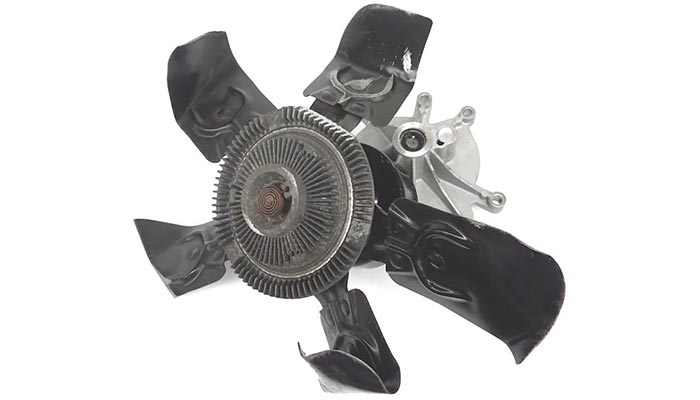 I have a hunch that the fan clutch is one of the most undersold car parts in the U.S. To be honest with you, it’s my professional responsibility to manage the cooling system parts for US Motor Works, LLC. Understandably, I have a somewhat vested interest in you (depending on which side of the counter you are on) buying or selling fan clutches. However, please hear me out. This entreaty isn’t about me and my interests — it’s about yours and your customer’s engine.
I have a hunch that the fan clutch is one of the most undersold car parts in the U.S. To be honest with you, it’s my professional responsibility to manage the cooling system parts for US Motor Works, LLC. Understandably, I have a somewhat vested interest in you (depending on which side of the counter you are on) buying or selling fan clutches. However, please hear me out. This entreaty isn’t about me and my interests — it’s about yours and your customer’s engine.
This is why you need to sell more fan clutches: For example, a 90,000-mile Ford F-150 comes to a shop for a water pump service replacement, or the vehicle owner comes to a store to buy a water pump. You look up the job cost or part number, quote the price, a transaction takes place and the work is done. A month later, the customer returns to the shop or store with a complaint that the water pump you installed or sold has a leak, a squeal, or worse: it has a snapped shaft that deposited pieces of the cooling fan into the radiator and another part in the hood. US Motor Works gets a call about this claim because it is our water pump. We commence our return and labor claim machinations and request all parts subject to this claim be returned for analysis. We then analyze our broken water pump; a bent, battered fan; and a dilapidated, leaking, locked-up 90,000-mile fan clutch.
Yes, someone put a 90,000-mile fan clutch back onto my pristine, brand-new, inspected and tested water pump. The old fan clutch, as it wears down, can become out of balance. This imbalance is subtle at first and will grow over time. The imbalance causes vibrations, or what might be described as a spinning top losing its momentum, and it starts to wiggle. This constant pounding caused by the fan/fan clutch on the water pump shaft will eventually damage the water pump seal and coolant will begin to appear. This coolant then will get to the shaft, wash out all the grease and cause the overall failure of the water pump. This aging fan clutch could very well be the cause of the original water pump leak. Little bends or cracks in the cooling fan can cause an imbalance as well.
What went wrong? The fan and fan clutch were removed to access the water pump, the old water pump was removed, the new water pump was installed, but the old fan and fan clutch were reinstalled.
So, who believes a fan clutch should be replaced at the same time as the water pump? I’d like to think this is intuitive, but I’ve looked through enough OE and aftermarket repair material and interviewed enough mechanics to know that not only is this instinct hit-or-miss, but the information within service bays does not reference it. So, who does? Water pump manufacturers do.
All the key water pump manufacturers warn would-be customers of this potential problem. It is repeated on websites and electronic catalogs when viewing water pump applications that have a corresponding fan clutch. Numerous aftermarket websites advise changing the fan clutch along with the water pump because of similar service life, because they share a common shaft, or to check the fan and fan clutch for damage and wear before reinstalling so you do not destroy the new water pump. Like the man who replaces just one of his taillights, it is only a matter of time before he will need to replace the other taillight, or, in this case, the fan clutch or the water pump.
We all know trying to convince a customer to purchase that tricky second part is challenging at best. I’ll bet trying to get consumers to buy coolant along with a water pump is difficult enough, much less attempting to get them to buy another mechanical part that they may not have heard of or even noticed. We’ve erased the need to upsell by offering a one SKU solution. It’s called a Max Cooling Kit. Next time you look up that Ford F-150, instead of finding only a water pump and a vague warning that “the fan clutch mounts to it so it should be replaced,” you can find our part number: MCK1026 Max Cooling Kit, and tell your customer, “This is the only part you’ll need.”
Courtesy of Jason Mirth, Product Manager, US Motor Works














